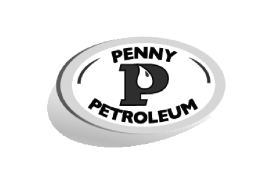Being a fuel retailer takes a lot of skill, particularly when making decisions. Retailers we are in contact with always bring up the fact that the market is changing on an ongoing basis, in some cases leading to highly volatile profits.
You may never find that “sweet spot” you crave, but there are some great best practices that can help you get closer to optimising your station’s potential:
- Accept the challenges you face and adapt to them.
Volatile gasoline prices, pipeline hackings, global pandemics. And that’s just in the last 12 months. Throw electric vehicles, market consolidation and aggressive competition into the mix and you’ve got one crazy cocktail of potential business impacting situations. The key here is to remember that you are not alone when these types of external factors appear and your competition will likely be impacted too. Stay aware of them, adapt to them better than the competition and -above all- be ready for when things get better!
- Remember that fuel is still a huge part of the business.
This is the hot topic; the move from filling station to ‘retail hub’. Stores are being revamped with brand partnerships, slick facilities, food offerings and more. Of course, paying attention to what dry-goods you market is incredibly important and spending CAPEX wisely will pay off over time and maybe extend the life of your station. But don’t (completely) sacrifice your fuel offering for this. If you are investing in your station (or plan to), consider how you will make that return on investment. Will it drive more volume or will you need to pay for it with some additional margin? How will you change your pricing strategy to fit?
- Data is your best friend.
Most retailers have been in this game for a long time and have accumulated an incredible amount of knowledge. That knowledge is no less important today. It is more important. The only difference is that the format has changed to fit the needs of the market! Remember the challenges we mentioned above? You can counter them with fast access to useful data insight about your stations. A smaller retailer can counter the challenges from market consolidation by leveraging their knowledge of their sites alongside new and insightful information that can help build better pricing strategies.
- Use technology to protect your profits
Technology comes in many forms and different solutions work for different types of companies (and people). Getting connected to a central source of truth not only allows you save tonnes of time and run a more efficient organization, but it can also provide you with analytics and insight that we mention in point 3. Take automated pole sign price change technology for example; an extra 5cpg an hour faster on every price change (assuming you change daily) for a year can be worth thousands of dollars.
- Keep that eye on the competition.
This is best practice that you already knew. The consumer habits are changing and drivers have become less price sensitive over the last five years (NACS 2020 surveys suggest only 52% see price as the dominating factor). Watching the competition’s price is vital as a comparison point, but the most profitable retailers are not followers. Identify who your real competition is, assess the market and what type of customer you attract and then price accordingly. Don’t forget 48% of consumers are choosing stations for a reason other than price…but 52% still are!
So there you have it. Five best practices to steer you through the good and the bad times. As the market changes, doing the same thing won’t get you the same results, so it’s vital to think about the above (and more) to optimise your fuel business.














